How to Make Giant Smoke Rings
Toy manufacturers sold small air blasters that sent vortexes of air sailing across a room that surprised innocent victims and delighted not-so-innocent spectators. With a little practice, […]
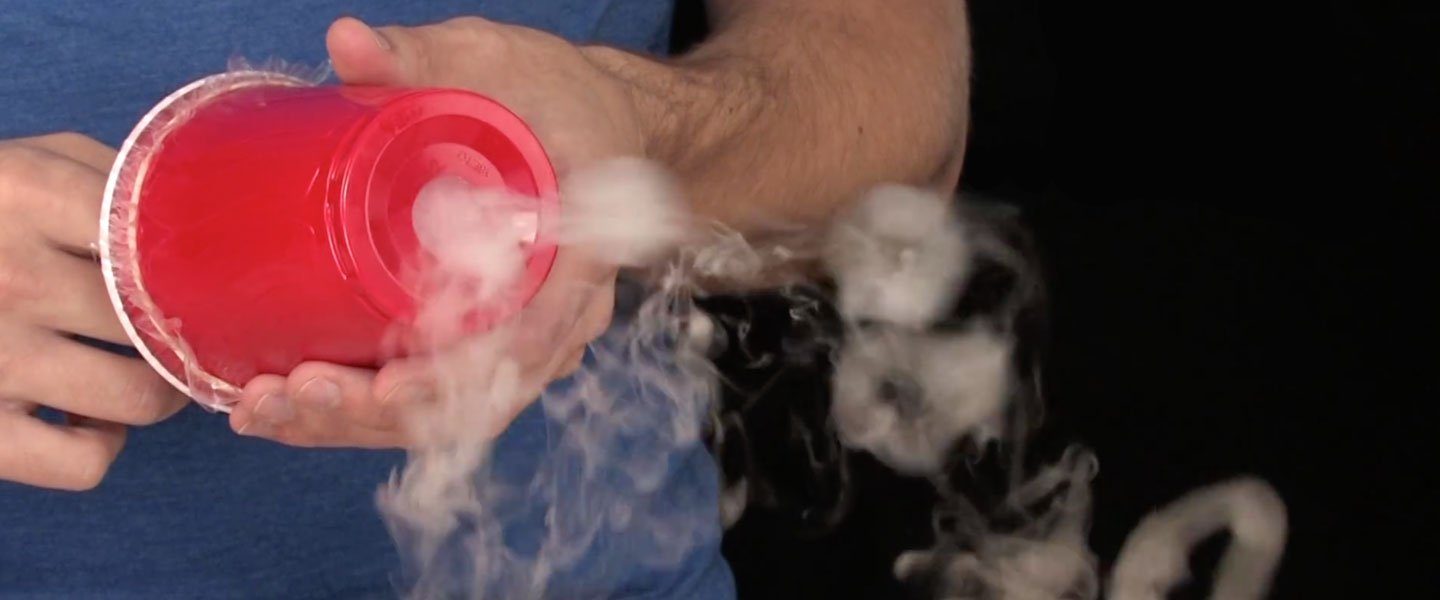
Inspired by Steve Spangler’s original trash can smoke ring launcher, this mini version uses easy to find materials to make your vortex vapor ring launcher. While lots of people say “smoke,” you’ll learn that the flying smoke rings are actually water vapor particles created by dropping small pieces of dry ice into water. That’s right… you’ll also need a small amount of dry ice (available at many grocery stores).
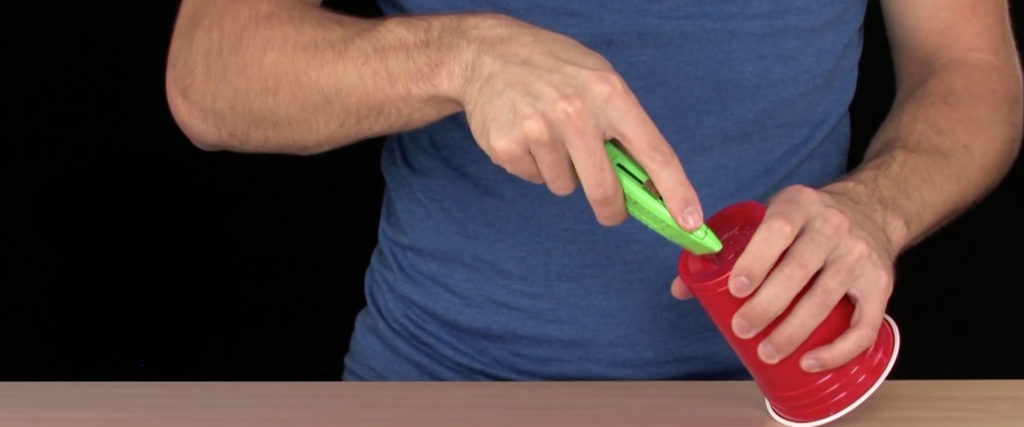
Turn the cup over and trace the coin onto the bottom with the pen. Make the circle as close to the center of the cup as possible. Ask an adult for assistance with this part. Using the scissors or the utility knife, cut out the circle you traced on the bottom of the cup. Make the edges as smooth and round as possible.
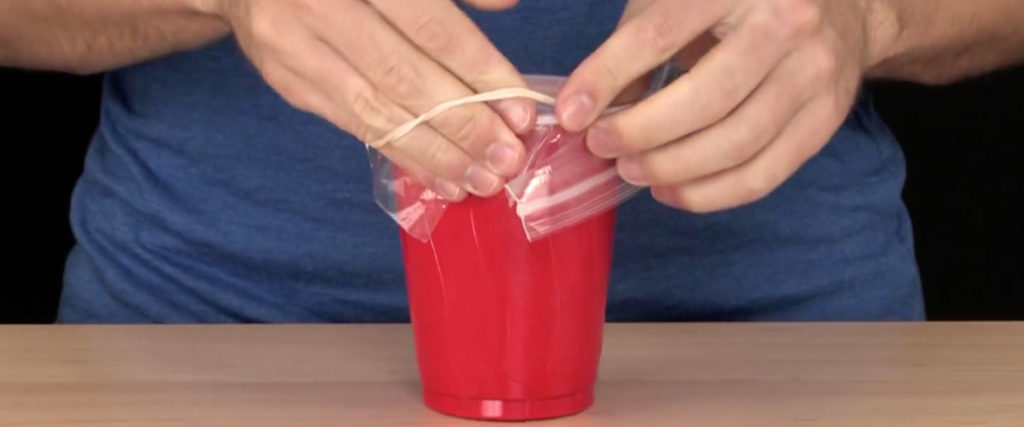
Lay the plastic bag over the large, open end of the cup. Hold it tightly in place with the rubber bands.
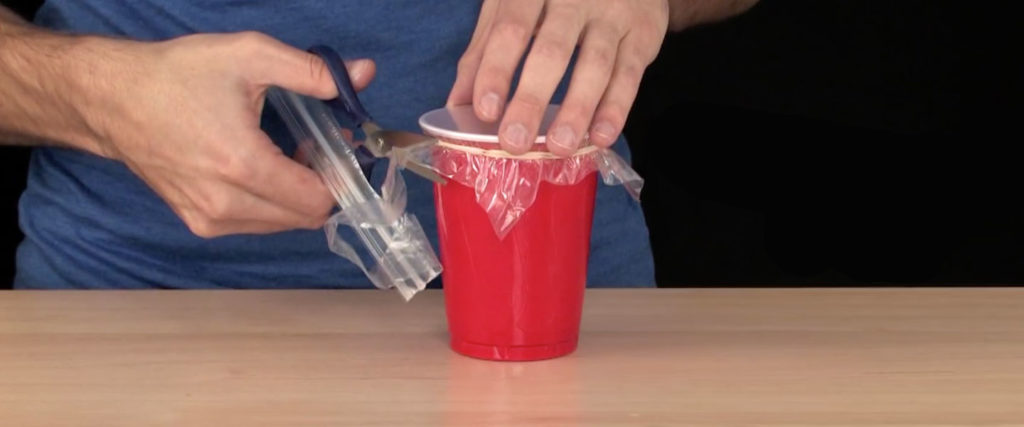
Use the scissors to trim away excess plastic. Be sure to leave enough plastic around the opening to allow you to grab it and pull it snug.
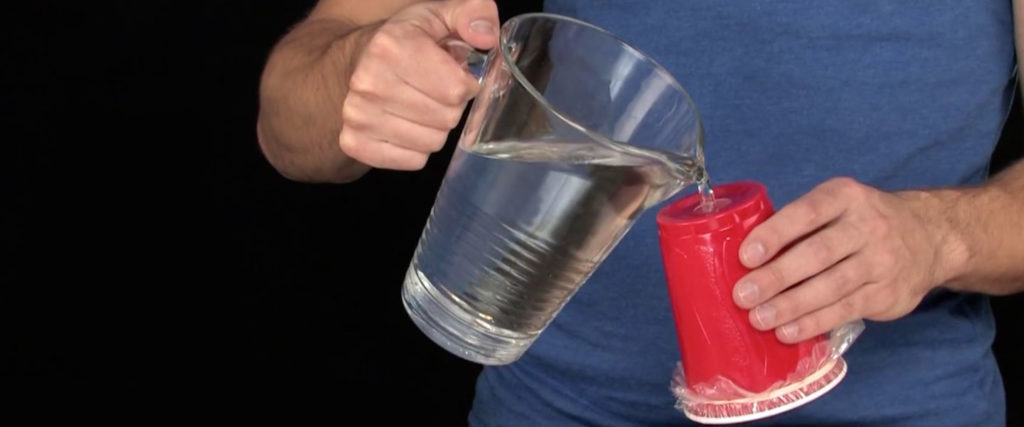
Pour about 2 oz (60 ml) of warm (not hot) water into the cup through the hole you cut in the bottom.
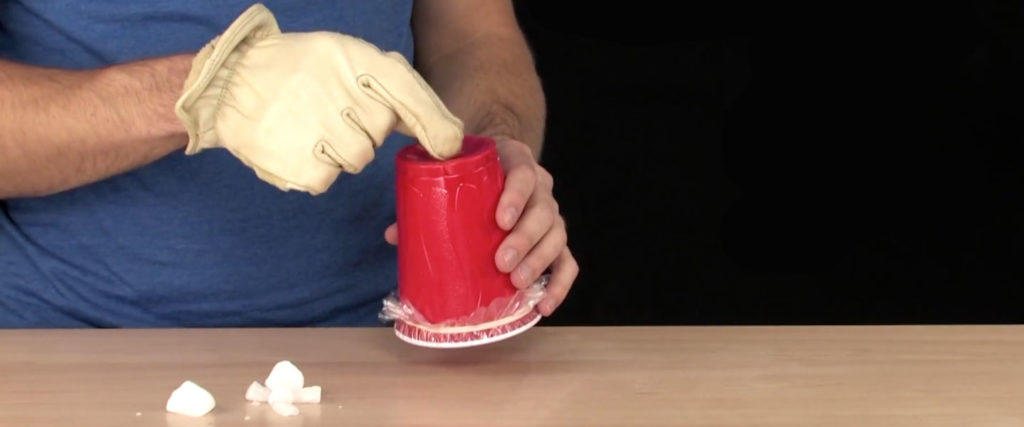
Wear the heavy gloves and drop 1 or 2 pieces of dry ice (small enough to fit through the hole) into the cup. Wait couple of seconds and white vapor begins to belch from the hole!
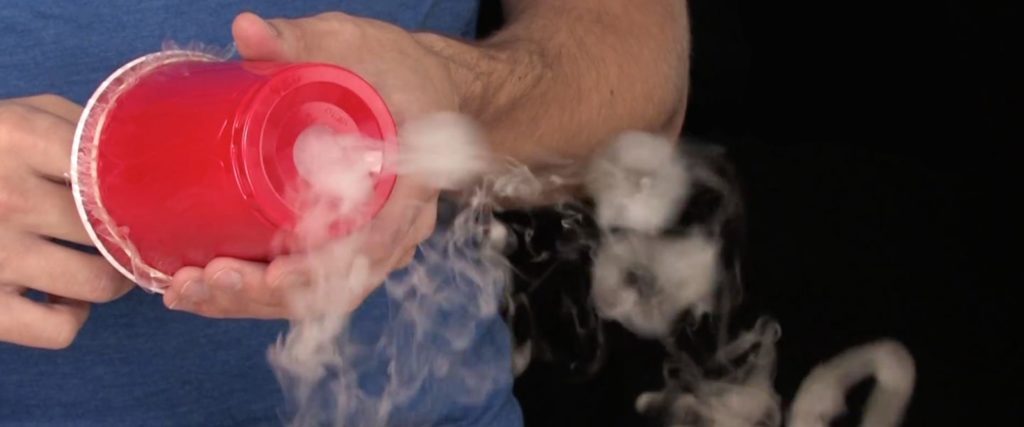
Hold the cup with one hand so that the plastic wrap is facing you and the hole points away. Tilt the cup a little so the water stays puddled against the plastic. With your other hand or fingers, lightly tap the plastic layer. It may take a little bit of practice, but you’ll be shooting picture perfect vapor rings in no time. In fact, set up a candle across the table from you and shoot vapor rings to put it out. Test to see how far you can be from the candle and still put it out.
The correct name for your smoke ring launcher is “vortex generator.” The ring of air that shoots out of the hole you cut into the cup is actually a flat, rolling vortex of air. A vortex is generated because the air leaving the cup at the center of the hole is traveling faster than the air leaving around the edge of the hole. That speed difference creates a swirling motion or vertical vortex that can be seen rolling through the air if a little vapor is blown out with it. Tapping the plastic on the cup creates the movement of air needed for a vortex to form and the tapered shape of the cup pushes the moving air together.
But where does the vapor come from? When you drop a piece of dry ice into warm water, the gas cloud you see is a combination of carbon dioxide (CO2) and water vapor. So, the gas you see is actually a cloud of tiny water droplets. In many ways, this activity demonstrates that air occupies space… and the flying vapor rings are an added bonus.
How is Dry Ice Made?
The first step in making dry ice is to compress carbon dioxide gas (CO2) until it liquefies while at the same time removing excess heat. The CO2 will liquefy at a pressure of approximately 870 pounds per square inch (4500 cmHg) at room temperature. Once liquid CO2 is formed, the CO2 is sent through an expansion valve and enters a pressure chamber. This pressure change causes the liquid to flash into a solid and causes the temperature to drop quickly. About 46% of the gas will freeze into “dry ice snow.” The rest of the CO2, about 54%, is released into the atmosphere or recovered to be used again. The dry ice snow is collected in a chamber where it is compressed into block, pellet, or rice-sized pieces using hydraulics. It’s complicated but really cool science – really cool.
Can you make your own dry ice? Sure, anything is possible, but it’s not practical (unless you have a huge tank of compressed CO2 sitting around and lots of extra time and equipment on your hands). For around $2 US a pound, it’s hard to beat the convenience of just purchasing it at the store.
NOTE: Whenever you use dry ice, always be aware of the rules for handling it safely.
Dry ice is not frozen water – it’s frozen carbon dioxide (CO2). Unlike most solids, dry ice does not melt into a liquid as the temperature rises, but instead, changes directly into a gas. This process is called sublimation. The temperature of dry ice is –109.3°F (-78.5°C). Dry ice is particularly useful for keeping things cold because of its temperature. Dry ice does not last very long, however, so it’s important to purchase the dry ice you need for these science activities as close as possible to the time you need it. The best place to store dry ice is in a Styrofoam ice chest with a loose fitting lid that allows the CO2 to escape as the ice sublimates.
Some grocery stores and ice companies will sell dry ice to the public especially around Halloween. Dry ice is typically sold as flat, square slabs a few inches thick or as cylinders that are about three inches long and about a half-inch thick. Either size will work fine for these experiments.
Remember the science when purchasing dry ice. Dry ice in a grocery bag will vanish in about a day. The experts tell us that, depending on weather conditions, dry ice will sublimate at a rate of 5 to 10 pounds (2.3 to 4.5 kg) every 24 hours even in a typical Styrofoam chest. So, again, it’s best to purchase the dry ice as close to the time you need it as possible. Last minute shopping is necessary. If you are planning to perform a number of dry ice demonstrations or have a lot of people involved, purchase 5 to 10 pounds (2.3 to 4.5 kg). A little dry ice does go a long way in these activities.